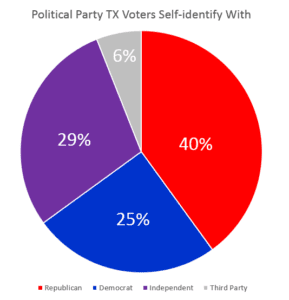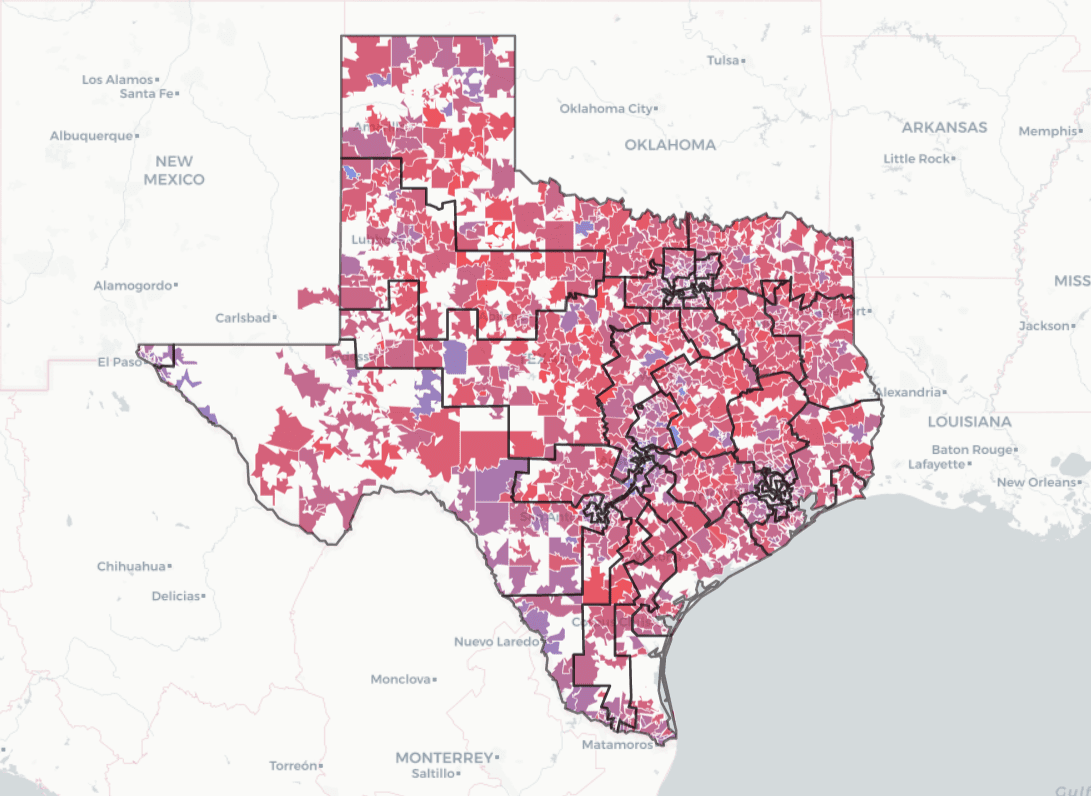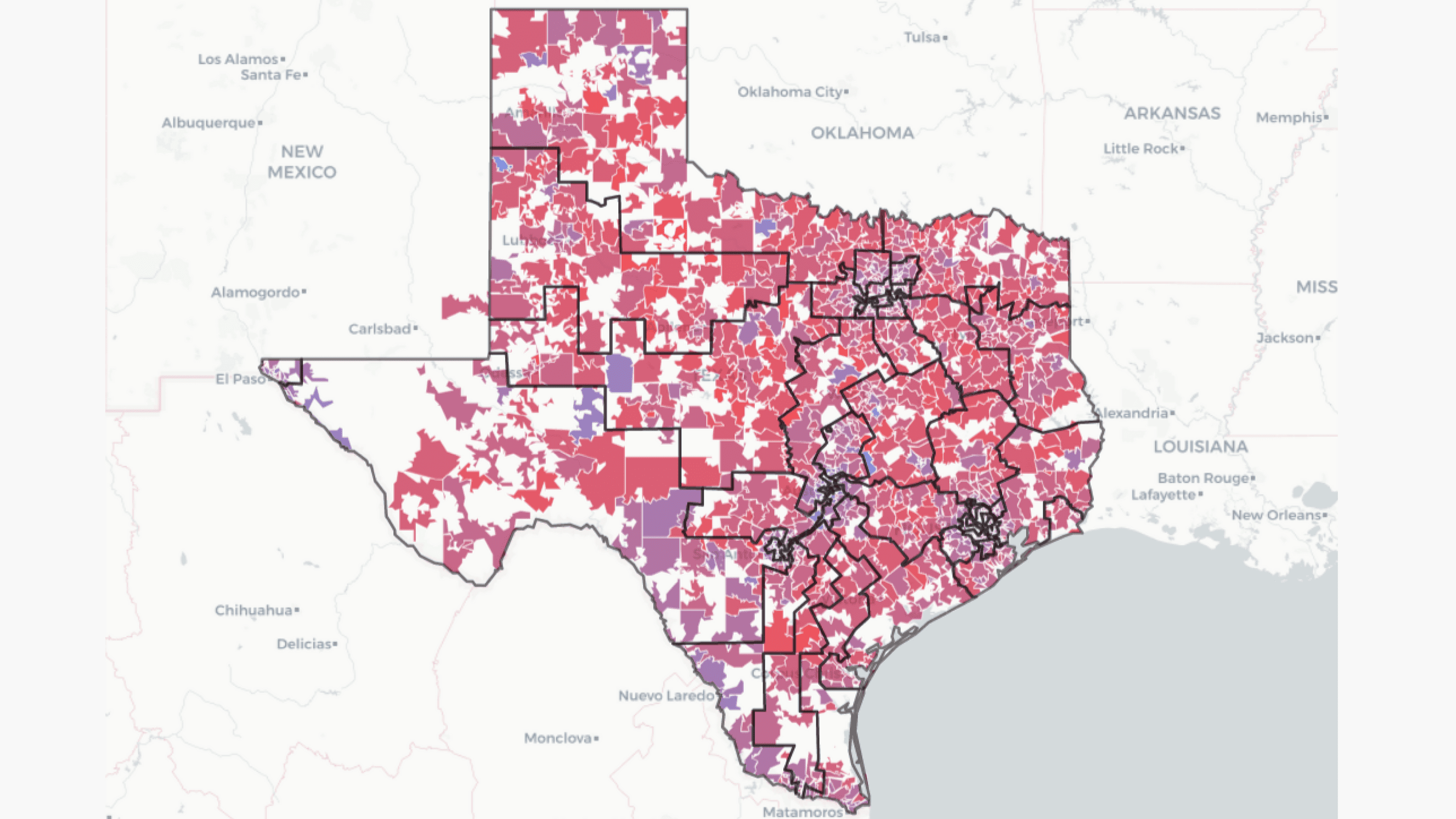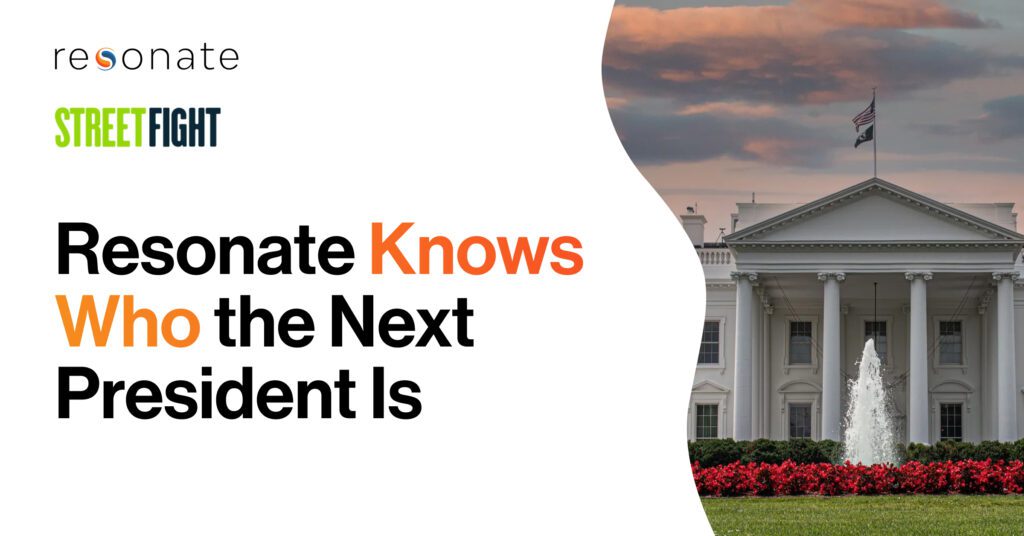A recent Quinnipiac poll found the 2018 Senate race in Texas “too close to call”, suggesting things may be a little closer than you think in a known Republican stronghold.
For a deeper understanding on what’s happening in Texas, we leveraged Resonate’s artificial intelligence (AI) platform to analyze the current partisan divide in the state, focusing on how voters identify politically and then assessing the levels of partisanship present in their media consumption habits. Here’s what we found:
Republicans Hold Majority Support – Independents Outnumber Democrats
 When assessing which political party voters in Texas self-identify with, our predictive models show that Republicans still hold the lion’s share of support with 40% — compared to 25% Democrats. No big surprise here considering recent election results.
When assessing which political party voters in Texas self-identify with, our predictive models show that Republicans still hold the lion’s share of support with 40% — compared to 25% Democrats. No big surprise here considering recent election results.
The real game changer could be in the purple. Our models show that 29% of registered voters in Texas now identify as Independents. Such a big slice of voters not identifying with a party helps us understand the heightened level of uncertainty that’s crept into Texas this cycle. It should also serve notice to both sides: the path to victory needs to include a sophisticated Independent outreach strategy.
The Media Bubble Phenomenon: How Online Behavioral Activity Translates to Real World Patterns
Using AI powered solutions, Resonate is enabling the modern political campaign to identify-analyze-target ideologically driven, private communication channels in the digital world, better known as “media bubbles”. These strategies are deployed to better understand political landscapes through real-time behavioral patterns and leverage deep voter insights to target persuadables trapped in hostile media environments. Learn more about the role of media bubbles in modern day politics.
Texas Bubbles
Media Consumption Leans Conservative –Liberal Consumption Also Evident

The above map represents the average level of liberal-conservative bias in online news consumed by Texas voters – at zip code level. Congressional boundaries are drawn to understand the various media bubbles throughout each congressional district.
Given our models show self-Identifying Republicans outnumbering Democrats in Texas by 15%, it’s no surprise that the behavioral data – represented in the above map – shows on average most Texans consume conservative news online.
However, heavy purple patches on the southern border and blue pockets throughout the state tell us the conversation is far from one-sided.
With six months until Election Day, there’s plenty of stories and facts yet to be told. The side that ends up controlling the conversation often comes down to who tells their story best – to the right voters – at the right time.
Want to learn more about media bubbles? Check out Resonate’s free SlideShare, providing a detailed look at the media bubble phenomena in modern day politics and how campaigns can leverage AI to disrupt voter behavior throughout campaign lifecycles.
Breaching the Bubble: Establishing an Effective Counter Narrative in an Era of Echo Chambers



